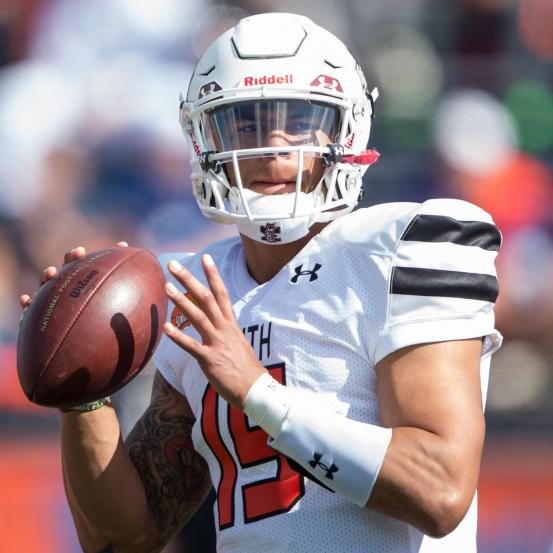- Commissioner’s statement on Ventura, Marte
- Ronnie O’Sullivan: Masters champion ‘felt so vulnerable’ in final
- Arron Fletcher Wins 2017 WSOP International Circuit Marrakech Main Event ($140,224)
- Smith challenges Warner to go big in India
- Moncada No. 1 on MLB Pipeline’s Top 10 2B Prospects list
- Braves land 2 on MLB Pipeline’s Top 10 2B Prospects list
- Kingery makes MLB Pipeline’s Top 10 2B Prospects list
- New Zealand wrap up 2-0 after Bangladesh implosion
- Mathews, Pradeep, Gunathilaka to return to Sri Lanka
- Elliott hopes for rain for Poli
Dallas’ Patience with Dak Prescott Could Spell Tony Romo Succession Plan
- Updated: April 30, 2016

Dallas Cowboys owner Jerry Jones has long been known for the twinkle in his eye at the mere thought of making a draft splash. He’s the guy at your fourth of July party who loudly announces his coming splashdown, then cannonballs onto the inflatable glazed donut with sprinkles.
That’s his favorite draft party trick, and everything works out just fine when the Cowboys’ success as a brand is also connected to their success as a football team. In the 2016 NFL draft both of those sometimes competing interests worked together in perfect harmony.
The latest example of Jones’ willingness to chill poolside and let the party come to him was his patience at quarterback while waiting to choose Dak Prescott. He now slides into an ideal situation to grow, learn and develop, before possibly becoming Tony Romo’s successor.
Prescott was selected with the Cowboys’ late fourth-round pick (135th overall), which meant that Jones wisely stuck to a blueprint laid out long before names started tumbling from draft boards. That earned him an A+ grade from Bleacher Report’s Matt Miller:
Share Tweet Embed
Back in February Jones told ESPN.com’s Todd Archer he plans to call Romo his quarterback for the next four-to-five years. That’s a comically unrealistic statement about a 36-year-old who has busted the same collarbone three times, and only played four games in 2015.
But even if Jones’ long-term projections for Romo are misguided, the short-term approach at quarterback in this draft was the right one.
Dallas had multiple other glaring needs with their fourth overall pick, and both Carson Wentz and Jared Goff were always going to be long gone. So if Romo can stay healthy for a few more seasons, the logical plan was to wait and draft a developmental project.
Jones hinted strongly at that path when he spoke to Katie Hairopoulos of the Dallas Morning News. He said drafting a quarterback was “certainly not a high enough priority to make a bad decision or a forced decision.”
And the Cowboys didn’t make a bad decision or a forced decision. Instead, they made the right decision.
The Cowboys did what the New York Jets are attempting with Christian Hackenberg. They selected a prospect with enough promising tools to make talent evaluators excited and intrigued. They also selected a prospect with enough flaws to fuel concerns about his development trajectory, and ability to succeed at the next level.
The difference? They did it 84 picks later, an area of the draft when you’re supposed to begin the next project with your project quarterback.
That’s when risk is sufficiently mitigated with a sparkling yet raw prospect. And as Miller noted, that’s when you find value for your high-ceiling potential …
continue reading in source www.bleacherreport.com
